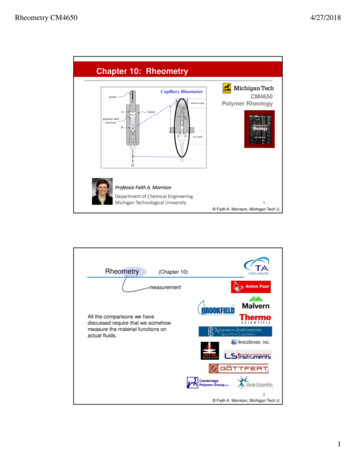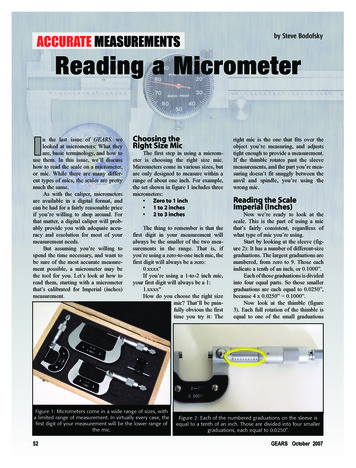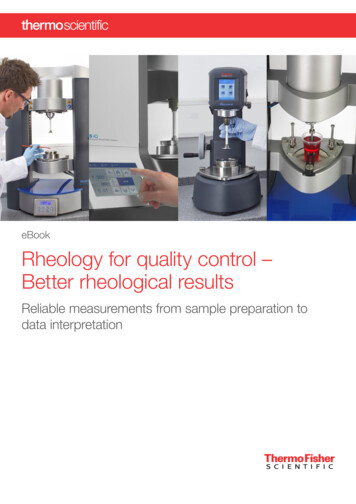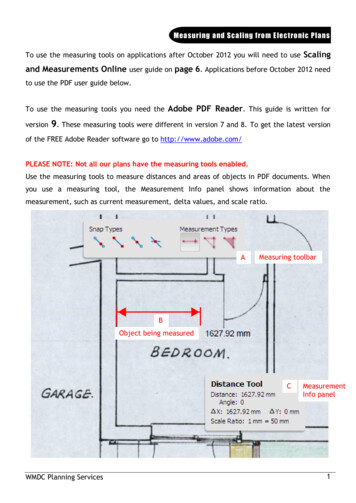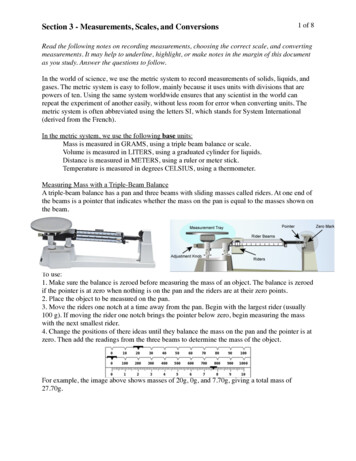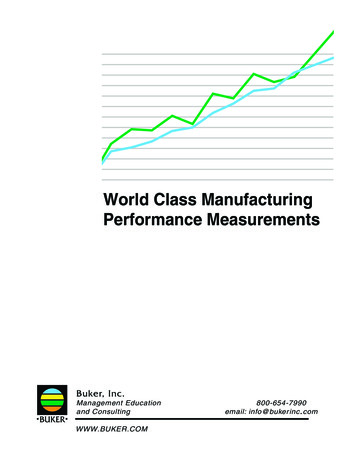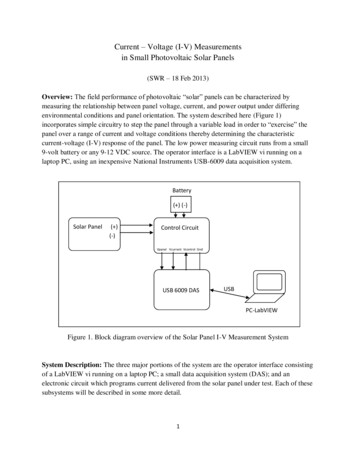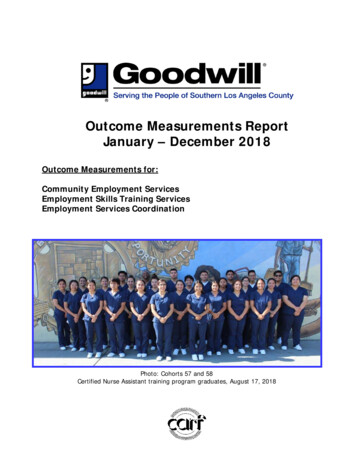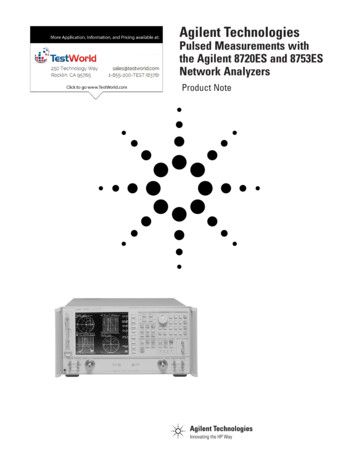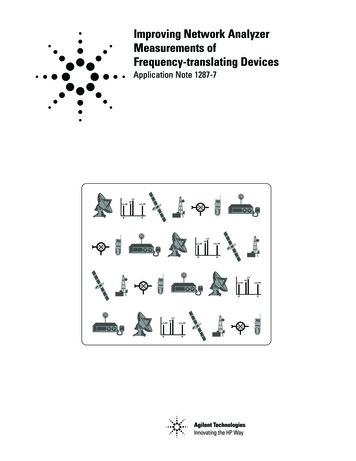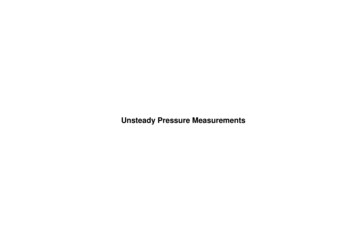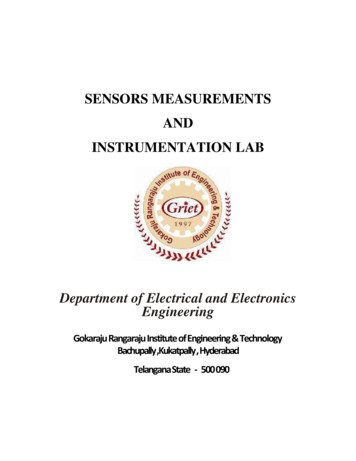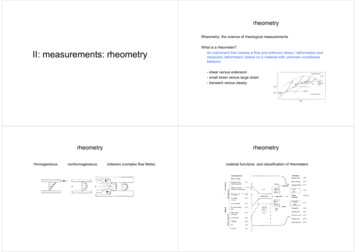
Transcription
rheometryRheometry: the science of rheological measurementsII: measurements: rheometryWhat is a rheometer?An instrument that creates a flow and enforces stress / deformation andmeasures deformation /stress on a material with unknown constitutivebehavior- shear versus extension- small strain versus large strain- transient versus indexers (complex flow fields)material functions and classification of rheometers
IntroductionDrag flow:5: shear rheometry: drag flows(versus pressure driven flows)shear flow generated by a movingand a fixed solid surfacePressure driven flow: shear generated by a presuredifference over a closed channelMeasure the:- relaxation modulus- transient shear viscosity- steady shear viscosity- first normal stress difference coefficient- second normal stress difference coefficientShear flow geometriesDrag flow: sliding platesWorking equationsCritical time for homogeneous simple shear flow
Drag flow: concentric cylinders (Couette flow)Assumptions:- Steady, laminair, isothermal flow- vθ r Ω only and vr vz 0- Negligible gravity and end effects- Symmetry in θ, / θ 0Drag flow: concentric cylinders (Couette flow)Shear stress:Torque measured at the inner cylinder Equations of motion, cyl. coordinatesBoundary conditionsOuter cylinder Drag flow: concentric cylinders (Couette flow)Strain and strain rateDrag flow: concentric cylinders (Couette flow)Change of variable:Dropping subscripts:Very narrow gap (Ri/Ro 0.99):Integrating (rotating inner cyl.):Ri/Ro 0.99, cylinder coord.:Shear rate varies across the gapDifferentiating with respect to stress:With:It follows:
Drag flow: concentric cylinders (Couette flow)For 0.5 κ 1.0 expand:In Mclaurin series:Where n, the power law index, interms of torque and rotation rate :For κ 0.5, n const. :ErrorsEnd effectsSecondary flows (Taylor vortices)Shear heatingRemarksThe deriviation shown is typicalfor nonhomogeneous flows:- the derivative of the velocity with position is difficult to measure- transform to derivative of stress with respect to rotation / flow rate- see parallel plate and pressure driven rheometers
Assumptions:- Steady, laminair, isothermal flow- vΦ (r, θ) only; vr vz 0- β 0.10 rad ( 6o)- Negligible bodyforces- Spherical liquid boundaryEquations of motion, spherical coordinatesBoundary conditionsDrag flow: cone and plate rheometerEdge failureDrag flow: cone and plate rheometerDrag flow: cone and plate rheometerDrag flow: plate-plate rheometerAssumptions:- Steady, laminair, isothermal flow- vΦ (r, θ) only; vr vz 0- Negligible bodyforces- Cylinderical edgeEquations of motion, cyl. coordinatesShear heating:
Drag flow: plate-plate rheometerVelocity, shear rate and shear:Torque:Change of variables:Normal stress
Equations of motion, spherical coordinates Boundary conditions Drag flow: cone and plate rheometer Drag flow: cone and plate rheometer Edge failure Shear heating: Drag flow: plate-plate rheometer Assumptions: - Steady, laminair, isothermal flow-vΦ(r, θ) only; vr vz 0 - Negligible bodyforces - Cylinderical edge Equations of motion, cyl. coordinatesFile Size: 415KBPage Count: 6
